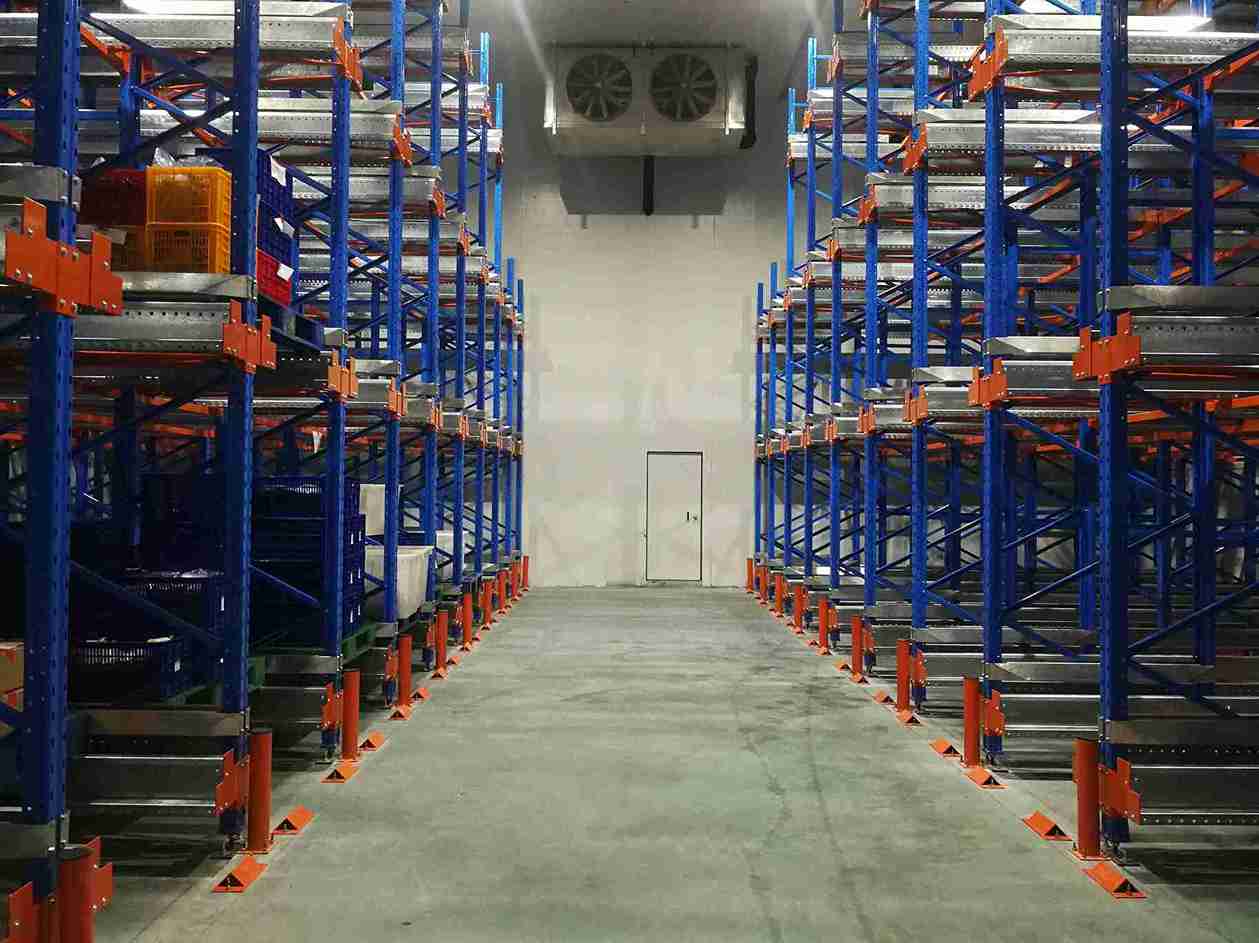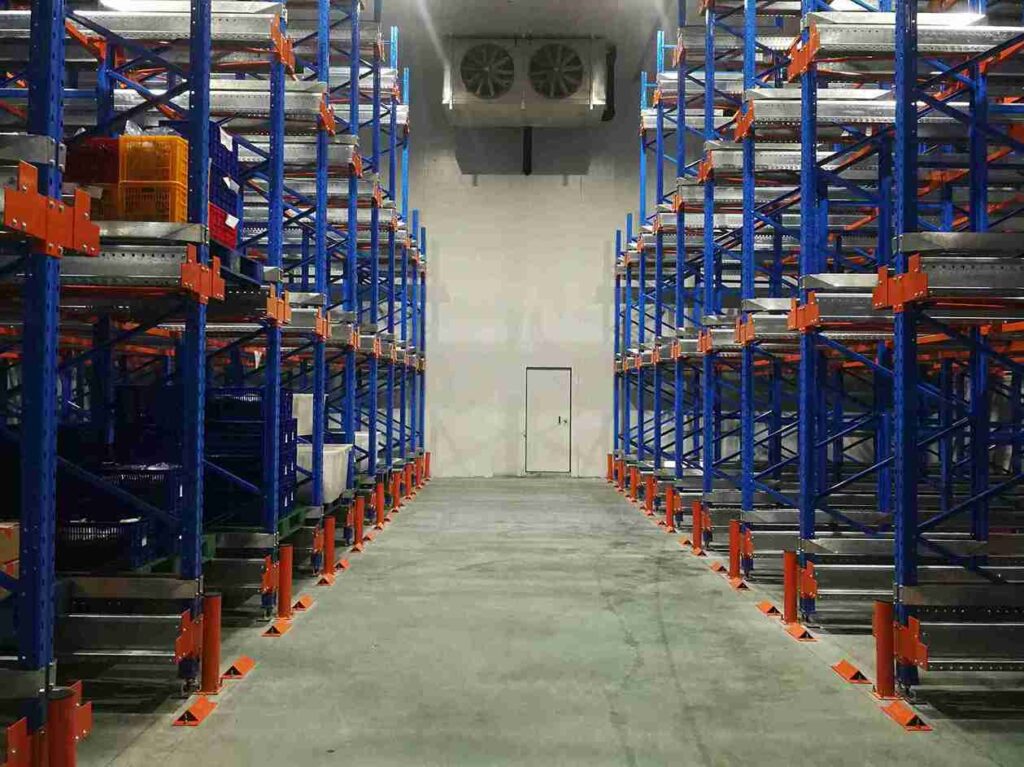📐 "First 50 Enterprise Queries Get Custom 3D Warehouse Design" Plan

Introduction: The Critical Need for Specialized Racking for Cold Storage
Operating a cold storage warehouse presents challenges that standard racking systems simply can’t handle. From sub-zero temperatures to constant moisture exposure, only purpose-built racking for cold storage ensures safety, efficiency, and longevity.
This in-depth guide explores the best racking for cold storage, analyzing material durability, system designs, and cutting-edge innovations. Whether managing a frozen food warehouse, pharmaceutical storage, or perishable goods distribution center, this resource provides actionable insights to maximize storage capacity while minimizing operational risks.

H1: Why Standard Racking Fails in Cold Storage Environments
H2: The Impact of Extreme Cold on Racking Integrity
Not all racking for cold storage is created equal. Standard warehouse racking often uses mild steel, which becomes brittle in freezing conditions. Over time, this leads to:
-
Cracked welds
-
Bent or warped beams
-
Catastrophic structural failure risks
True racking for cold storage must use cold-rated steel alloys with enhanced ductility to withstand -30°F (-34°C) and below.
H2: Condensation & Corrosion – Silent Racking Killers
Every time a freezer door opens, warm air rushes in, creating condensation buildup. Without proper corrosion-resistant racking for cold storage, facilities face:
-
Rust formation
-
Ice accumulation on beams
-
Premature system degradation
Top-tier solutions incorporate hot-dip galvanization or epoxy powder coatings to combat moisture damage.
H2: The High Cost of Wasted Space in Cold Storage
Refrigerated space is 3-5x more expensive than dry warehousing. Inefficient racking for cold storage leads to:
-
Underutilized vertical space
-
Excessive aisle widths
-
Lost revenue per square foot
Modern high-density racking for cold storage systems like drive-in racks and mobile shelving can increase storage capacity by 60-80%.
H1: The 5 Best Racking Systems for Cold Storage Warehouses
H2: 1. Selective Pallet Racking – The Flexible Workhorse
The most widely used racking for cold storage, selective systems offer direct access to every pallet.
H3: Why It Works in Cold Environments
-
Adjustable beams accommodate changing inventory
-
Galvanized steel construction resists moisture
-
Compatible with cold-optimized forklifts
Best for: Facilities with high SKU variety (e.g., food distribution centers)
H2: 2. Drive-In Racking – Maximum Density Solution
Eliminating aisles, this racking for cold storage allows 100% footprint utilization.
H3: Cold Storage Advantages
-
LIFO (Last-In-First-Out) inventory flow
-
Reinforced uprights prevent cold-induced stress fractures
-
Impact guards protect against forklift collisions
Best for: Bulk frozen goods with long shelf lives
H2: 3. Push-Back Racking – The Space-Saving Innovator
A dynamic racking for cold storage solution where pallets ride on inclined rails.
H3: Cold Climate Performance
-
2-6 pallet depth per lane
-
Reduced forklift travel minimizes cold air loss
-
All-stainless-steel rollers prevent freezing
Best for: Medium-turnover cold storage operations
H2: 4. Pallet Flow Racking – FIFO Perfection
Gravity-powered racking for cold storage that automatically rotates inventory.
H3: Why Cold Storage Operators Love It
-
Eliminates product aging (critical for perishables)
-
No powered components to fail in low temps
-
High throughput for fast-moving goods
Best for: Dairy, meat, and produce distribution
H2: 5. Mobile Racking – The Space Multiplier
Motorized racking for cold storage that slides on tracks to create temporary aisles.
H3: Cold Storage Benefits
-
Doubles storage capacity
-
Reduces energy loss from minimized aisle space
-
Optional heated guide rails prevent icing
Best for: High-value pharmaceuticals and ultra-low-temperature freezers
H1: Engineering Considerations for Racking for Cold Storage
H2: Material Science – Building for the Deep Freeze
-
ASTM A500 Grade C steel – The gold standard for racking for cold storage
-
Stainless steel alternatives for corrosive environments
-
Impact of thermal cycling on structural integrity
H2: The Coating Technology Arms Race
Comparative analysis of protective treatments for racking for cold storage:
| Coating Type | Thickness | Temp Range | Best Use Case |
|---|---|---|---|
| Hot-Dip Galvanization | 80-100 microns | -40°F to 120°F | General cold storage |
| Epoxy Powder Coat | 50-80 microns | -30°F to 200°F | Chemical exposure areas |
| Zinc-Aluminum Alloy | 120+ microns | -60°F to 300°F | Ultra-low temp freezers |
H2: Load Capacity Calculations in Frozen Conditions
Racking for cold storage requires derated weight capacities due to:
-
Steel embrittlement effects
-
Ice accumulation on loads
-
Forklift hydraulic limitations in cold
Safety rule: Always apply a 15-20% capacity buffer versus manufacturer ratings.
H1: Advanced Optimization Strategies for Cold Storage Racking
H2: Vertical Space Maximization Techniques
-
40-50 ft clear heights – How to safely utilize
-
Mezzanine integration with refrigerated platforms
-
Automated retrieval systems for high-level picking
H2: Energy Efficiency Through Smart Racking Design
-
Aisle width optimization to reduce cold air loss
-
Thermal break technologies in rack components
-
Solar-reflective surfaces to minimize heat gain
H2: Future-Proofing with Automation
-
AS/RS (Automated Storage/Retrieval Systems) in sub-zero temps
-
Robotic pallet handlers with cold-rated components
-
IoT-enabled rack monitoring for predictive maintenance
H1: Maintenance Protocols for Long-Lasting Racking for Cold Storage
H2: Quarterly Inspection Checklist
-
Weld integrity verification using NDT methods
-
Beam deflection measurements
-
Coating degradation assessment
-
Anchor bolt torque testing
H2: Specialized Lubrication Requirements
-
Low-temperature greases for moving parts
-
Food-grade lubricants in processing areas
-
Annual recoating schedules for high-wear zones
H1: The Future of Racking for Cold Storage
H2: Smart Racking Technologies
-
Embedded temperature sensors
-
AI-powered load distribution systems
-
Automated defrosting mechanisms
H2: Sustainable Cold Chain Solutions
-
Phase-change material integrated racks
-
Regenerative energy capture systems
-
Biodegradable insulation materials
Conclusion: Building a Cold Storage Racking System That Lasts
Selecting optimal racking for cold storage requires balancing durability, density, and accessibility. From high-density drive-in systems to automated retrieval solutions, today’s technologies offer unprecedented efficiency for frozen environments.
By implementing proper materials, coatings, and maintenance, cold storage operators can achieve 20+ year system lifespans while maximizing ROI on their most expensive asset – refrigerated space.
FAQs: Expert Answers on Racking for Cold Storage
1. How does racking for cold storage differ from ambient warehouse systems?
Cold storage racking uses special alloys, protective coatings, and reinforced designs to withstand temperature extremes that would destroy standard racking.
2. What’s the typical ROI period for upgrading to specialized cold storage racking?
Most facilities see 18-36 month payback periods through increased storage density and reduced maintenance costs.
3. Can existing warehouse racking be retrofitted for cold storage use?
In limited cases – requires complete recoating, weld reinforcement, and professional engineering assessment.
4. How do you prevent pallets from freezing to racking components?
Non-stick polymer decking and heated rack elements in critical zones prevent adhesion.
5. What safety certifications should cold storage racking have?
Look for ANSI MH16.1 compliance, SEI/ASCE 7 wind/load ratings, and local freezer facility codes.
This comprehensive guide to racking for cold storage provides the insights needed to build a high-performance frozen warehouse. For a customized racking solution assessment, consult with cold storage logistics experts today.




